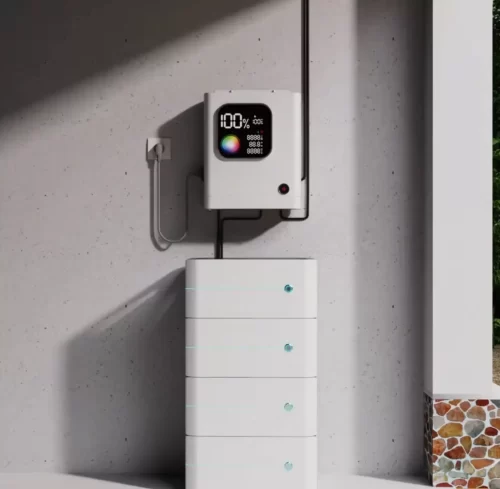As global demand for renewable energy grows, solar energy—one of the most promising clean energy sources—is experiencing unprecedented expansion. The Solar Inverter (SI) market, a core component of solar power generation systems, is also rapidly expanding. In this article, we will analyze the present and future of the solar inverter market by exploring global market trends, regional characteristics, technological developments, competitive landscapes, opportunities and challenges, case studies, and future outlooks.

Global Market Overview
- Overall Growth Trend
In recent years, the global solar inverter market has shown strong growth momentum. According to a report by Wood Mackenzie, shipments of photovoltaic (PV) inverters increased significantly by 56% year-on-year between 2022 and 2023, reaching a staggering 536GW. This impressive growth highlights the market’s vitality and the immense potential of the solar industry. In the first half of 2024, new installations and shipments are expected to continue their high growth trend, significantly contributing to the global energy transition. - China’s Market Leadership
In this wave of growth, China has firmly positioned itself as the leader in the global solar inverter market, leveraging its well-established industrial chain, advanced production technology, and substantial market demand. Chinese companies have excelled in technological innovation, cost control, and market expansion, providing cost-effective products and services to the global market.
Regional Market Characteristics
- North American Market
Demand for solar inverters in North America is primarily driven by policy support and energy transition goals. The U.S. and Canada are heavily promoting renewable energy programs, particularly in the commercial and industrial sectors, which is increasing demand for inverters. Federal tax credits (ITC) in the U.S. and state net metering policies are further stimulating market growth. - European Market
Europe was one of the first regions to adopt photovoltaic (PV) technology, characterized by policy stability and technological leadership. European countries have set stringent carbon emission reduction targets, providing the solar inverter market with significant growth opportunities. Germany, Italy, and Spain are major markets with increasing demand for high-efficiency and intelligent inverters. - Asia-Pacific Market
The Asia-Pacific region, especially China and India, is the primary driver of global solar inverter market growth. China is not only the world’s largest manufacturer of PV products but also the largest consumer market. India, meanwhile, is witnessing rapid growth in installed PV capacity, driven by national policies and rising demand for cost-effective inverters. - Latin American Market
The Latin American market, led by Brazil and Mexico, is experiencing rapid PV market growth due to abundant solar resources and improving policy support. In this region, the focus is primarily on large-scale ground power station projects, with strong demand for centralized inverters. - Middle East and Africa Market
The Middle East and Africa markets are on the rise, particularly in the Middle East, where abundant solar resources and the need for energy transition are driving rapid PV market development. In these regions, the application of inverters is shifting from traditional central inverters to more flexible string inverters.
Technology Development Trends
- Application of High-Voltage and High-Density Technology
The introduction of high-voltage, high-density technology significantly improves the power density and conversion efficiency of solar inverters. By increasing operating voltage, inverter losses are reduced, enhancing overall system power generation. This trend is particularly suitable for large ground power station projects, where it can significantly reduce initial investment and operation and maintenance costs. - Development of Photovoltaic Storage Integration
With advancements in energy storage technology, the integration of photovoltaic and energy storage systems is becoming a major trend. Energy storage inverters not only improve energy utilization efficiency but also provide backup power during grid failures, enhancing system stability. Integrated PV storage systems offer significant advantages in increasing self-consumption rates and reducing energy wastage. - Intelligent and Digital Inverters
The rise of smart PV has accelerated the development of intelligent inverters. With embedded AI and big data analysis technology, inverters can now perform self-diagnosis, adaptive adjustment, and remote monitoring. This enhances system operational efficiency while significantly reducing operation and maintenance costs. - Popularization of Modular Design
Modular design is becoming increasingly prevalent in solar inverters. This design approach makes installation, maintenance, and expansion more flexible, effectively shortening system downtime. Modular inverters are particularly well-suited for projects requiring expansion and upgrades, such as large-scale commercial and industrial rooftop PV systems.
Market Competitive Landscape
- Global Leadership of Chinese Companies
Chinese companies dominate the global solar inverter market, with companies like Huawei and Sungrow (formerly Sunny Power) continuing to increase their market share. According to recent data, Huawei and Sungrow hold 30% and 25% of the global market, respectively. Their strong R&D capabilities, economies of scale, and cost control have positioned Chinese companies as leaders in the global inverter market. - Major International Competitors
In addition to Chinese companies, European and American firms also hold a significant share of the inverter market. Companies like SMA and ABB have strong competitiveness in the European and North American markets, with their products known for high performance and reliability. However, the rise of Chinese enterprises is putting unprecedented competitive pressure on these traditional companies. - Market Concentration and Competitive Pressure
The global solar inverter market is becoming increasingly concentrated, with the market share of the top companies continuing to rise. However, with the continuous emergence of new technologies, competition remains fierce. Companies must focus on product innovation, cost control, and market expansion to maintain their competitive edge.
Market Opportunities and Challenges
- Market Opportunities
- Growing global demand for renewable energy: As global carbon emission reduction targets advance, renewable energy will become a crucial part of future energy systems, providing ample development opportunities for the solar inverter market.
- Cost reduction through technological advancement: Continuous technological advancements and economies of scale will further reduce the cost of solar inverters, enhancing their market competitiveness.
- Market Challenges
- Supply chain issues: Global pandemics and geopolitical factors have strained supply chains, affecting the production and delivery of solar inverters.
- Uncertainty in international trade policies: Changes in international trade policies could adversely impact the market, increasing operational risks for companies.
- Updating technical standards: As technology evolves and markets change, technical standards are continuously updated. Companies need to stay informed about market dynamics and technology trends, adjusting product strategies to keep pace.
Case Studies
- Huawei Intelligent Photovoltaic Solutions
As a leading global ICT solutions provider, Huawei has made significant achievements in the solar inverter field. Its Smart PV Solution integrates advanced information and communication technologies (ICT) for intelligent management and optimization of PV systems. This solution not only improves power generation efficiency and stability but also reduces operation and maintenance costs, delivering significant economic and social benefits to customers. - Sungrow’s Global Expansion
Through its global expansion strategy, Sungrow has established an extensive sales and service network worldwide. The company dominates the Asian market and is actively expanding into Europe, North America, Africa, and Latin America. Sungrow customizes inverter products to suit local market demands and forms close partnerships with local entities to promote solar energy projects. Sungrow also emphasizes technological innovation and R&D, continually launching industry-leading inverter products across a wide range of applications, including string inverters, central inverters, energy storage inverters, and microinverters.
Future Outlook
- Long-term Development Trends
Looking ahead, the solar inverter market will continue its rapid growth. With increasing global demand for renewable energy and driven by technological advancements and cost reductions, the solar inverter market will see expanded opportunities. As smart grids and microgrids develop, the demand for intelligent, modular, and grid-adaptive inverters will increase, creating new growth opportunities. - Potential Growth Areas
- Energy Storage Inverter Market: As energy storage technology matures and costs decrease, the energy storage inverter market is expected to grow rapidly. Energy storage inverters play a crucial role in PV systems by enabling energy storage and dispatch, improving system reliability and economy.
- Distributed PV Market: Distributed PV systems, favored for their flexibility and cost-effectiveness, are gaining popularity. The rapid development of distributed PV projects, such as rooftop and community PV systems, will make this market an important application area for solar inverters.
- Emerging Markets: Emerging markets in regions like Africa and Latin America are experiencing increased investment in renewable energy due to economic development and rising energy demand. These regions will become new growth points for the solar inverter market.
The global solar inverter market is in a phase of rapid development, driven by technological innovation, market demand, and policy support. Despite challenges in supply chains, international trade, and technical standards, the long-term outlook remains positive. Companies that focus on technological innovation, strategic planning, and market expansion will stand out in future competition. As a core component of PV systems, the market development of solar inverters will have a profound impact on the global energy transition.




